Bathe a Cat Like a Grooming Expert
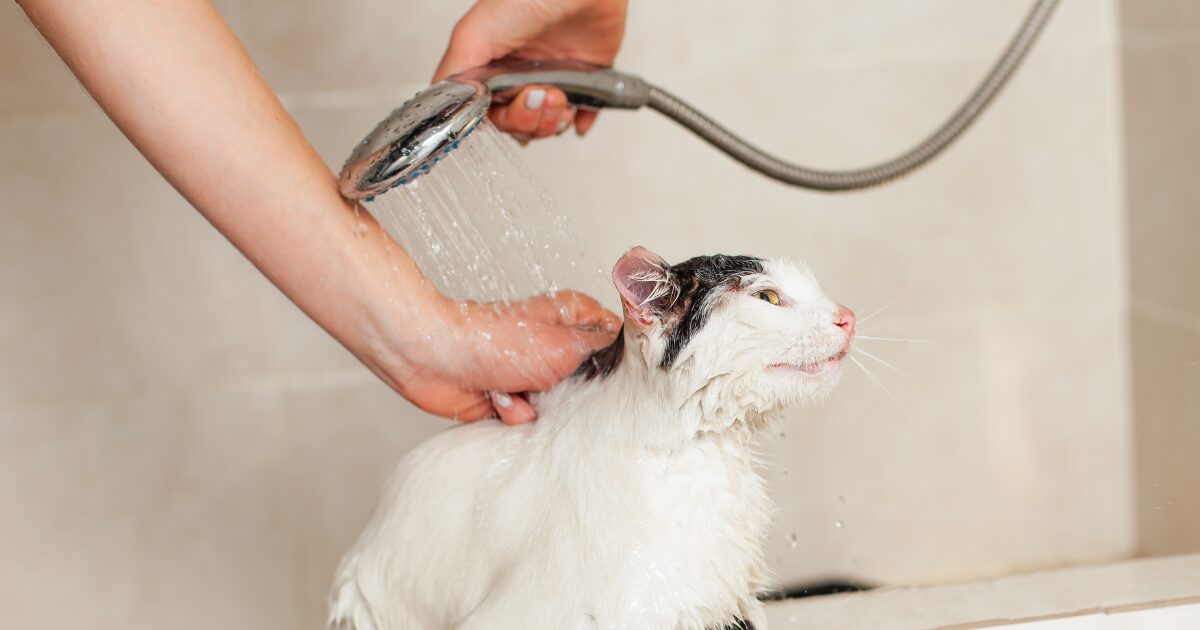
Bathing a cat—does it make you shudder just thinking about it? If so, you’re not alone. Cats are known for their meticulous self-grooming habits, but that doesn’t mean they don’t need a bath every once in a while. In fact, regular baths are essential for maintaining a clean, healthy, and shiny coat, especially for cats with long fur, skin conditions, or specific health issues. The problem is, most cats absolutely hate water. Combine that with the fear of scratches and the possibility of getting your home soaked, and it’s easy to understand why many pet owners avoid bath time altogether.
But fear not—bathtime with your feline friend doesn’t have to be a stressful ordeal! With the right techniques and preparation, you can turn this potentially unpleasant task into a smooth and efficient grooming routine. Learning how to bathe a cat like a grooming expert can transform the process into something that benefits both you and your cat in the long run. Not only will your cat’s coat remain healthy, but bath time can also become a bonding experience that enhances your relationship with your pet.
In this article, we’ll explore seven expert tips on how to bathe a cat, including essential advice for keeping your cat calm, choosing the right products, and ensuring that bath time becomes an efficient and even enjoyable part of your regular grooming routine. Whether you’re a first-time cat owner or an experienced cat care professional, this guide is packed with valuable insights that will help you become a confident and capable cat groomer. Ready to make bath time a breeze? Let’s dive in!
Why Learning How to Bathe a Cat Like a Grooming Expert Will Change Your Grooming Game Forever
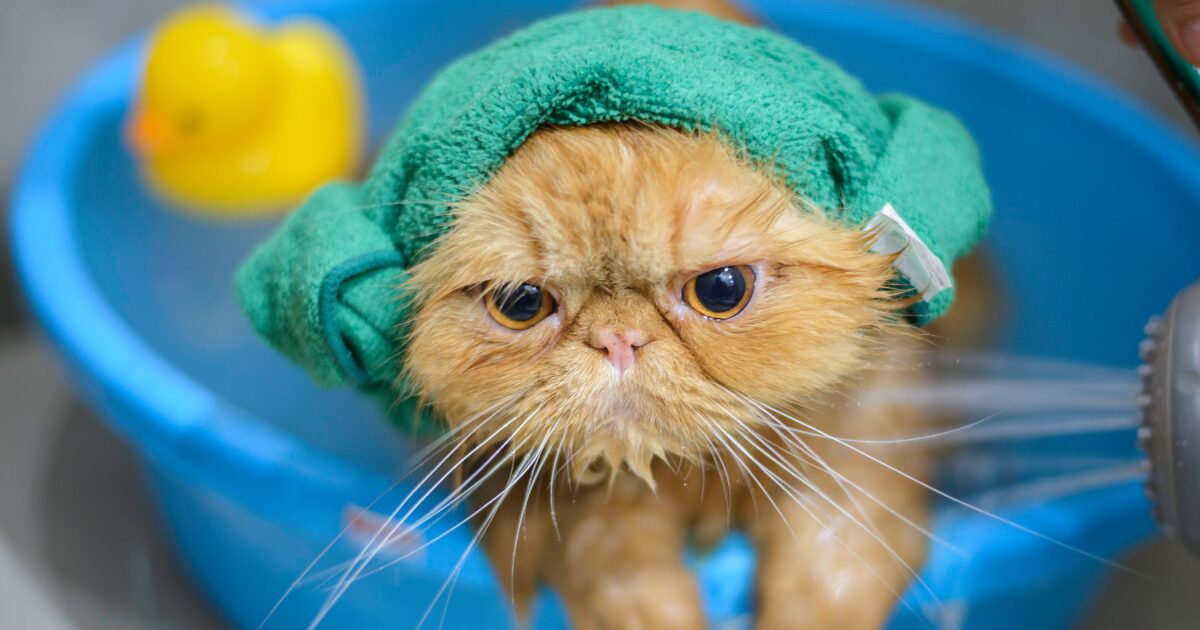
Learning how to bathe a cat properly is one of the most valuable skills you can acquire as a pet owner. While it may seem like a daunting task, especially if your cat isn’t a fan of water, getting the process right will not only improve your cat’s health but will also make future grooming sessions more effective and less stressful. A properly bathed cat will have a shiny, healthy coat, and regular baths can help prevent skin issues like itching, flaking, or dryness.
Many first-time cat owners or casual pet parents might think that cats don’t need regular baths since they groom themselves, but this isn’t always the case. While cats do self-groom to some extent, their natural oils, dirt, allergens, and sometimes even parasites can build up in their fur. Cats with longer coats are especially susceptible to tangles, mats, and hairballs, and those with sensitive skin or health issues may need more frequent baths. Additionally, some cats simply enjoy the occasional freshen-up, so a bath can become an opportunity for you to bond with your pet.
What truly sets grooming experts apart is their ability to bathe a cat without causing undue stress or discomfort to the cat. They have perfected their bathing techniques to create an environment that’s calm, gentle, and efficient. If you learn how to bathe a cat like a professional, you’ll not only improve your cat’s health but also make the grooming process quicker and more enjoyable for both you and your feline companion.
By following expert tips, you’ll also save time, reduce the mess, and avoid common pitfalls—like getting scratched or making your cat more anxious than necessary. Ultimately, learning how to bathe a cat properly will give you a sense of confidence and satisfaction that you’re taking the best care possible of your pet. Once you’ve mastered these techniques, bath time will no longer be a dreaded chore—it’ll be a quick, routine part of your regular care.
How to Bathe a Cat Without the Stress: Creating the Perfect Bathing Environment
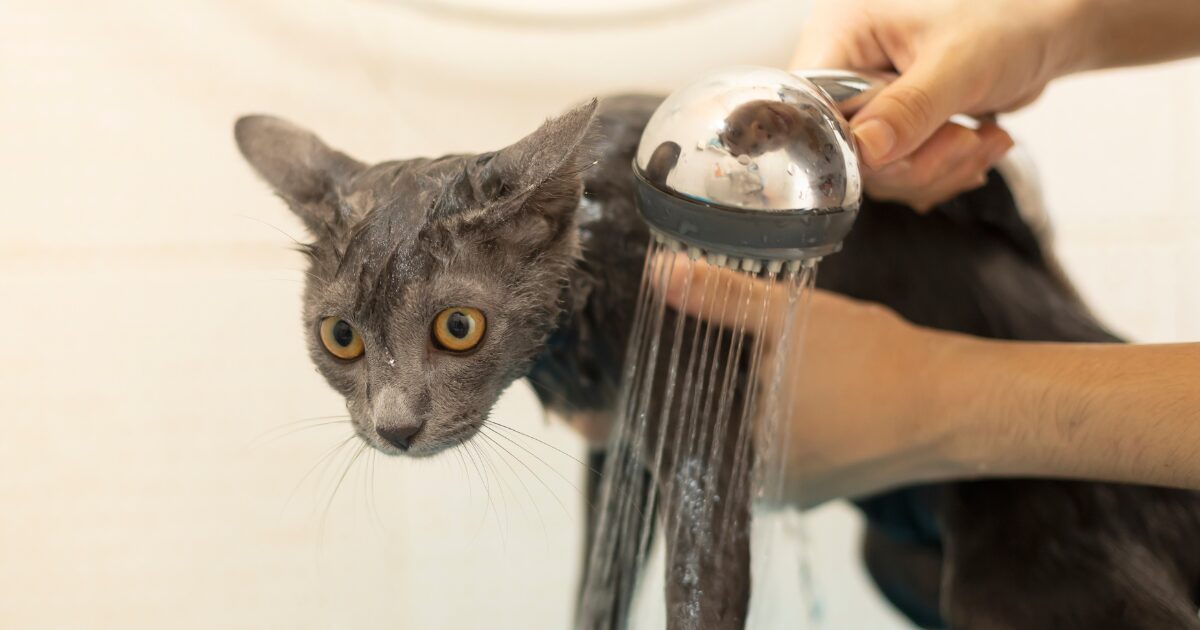
One of the main challenges when it comes to how to bathe a cat is managing your cat’s stress level. Cats are naturally independent and often prefer to stay in familiar spaces, so the idea of being submerged in water can be highly distressing to many cats. But by creating the perfect bathing environment, you can reduce your cat’s anxiety and make bath time a more peaceful experience.
First, choose a location where your cat feels safe. Some people choose to bathe their cats in a bathtub, while others prefer the sink or even a dedicated pet bath. A smaller space, like a sink, can feel more secure for some cats, while others may feel more comfortable in a larger bathtub. Regardless of where you decide to bathe your cat, make sure it’s a quiet, distraction-free area where you can focus entirely on the task.
Once you’ve picked the location, prepare the space ahead of time. Have everything you need within arm’s reach: cat-safe shampoo, towels, a cup or gentle showerhead for rinsing, and a soothing, non-slip mat. This way, you won’t have to scramble to find supplies during the bath, which could make your cat more anxious. Ensuring that the space is calm and clutter-free will also help your cat feel more secure.
Next, make sure the water temperature is just right. Lukewarm water is ideal for cats—too hot or too cold can cause discomfort. Cats are incredibly sensitive to temperature, so check the water before you begin and adjust it to a comfortable level. If you’re using a bathtub or sink, make sure that the water level is low to avoid overwhelming your cat.
If your cat is particularly skittish or has had negative experiences with baths in the past, consider using calming pheromone sprays or diffusers before bath time. These products can help ease your cat’s anxiety and make the entire process go much more smoothly. You can also play soft, relaxing music or talk to your cat in a calm, reassuring voice throughout the bath to keep them relaxed.
Setting up a stress-free environment before starting the bath will make a world of difference in your cat’s overall experience. The calmer and more secure your cat feels, the easier it will be to bathe them without drama.
How to Bathe a Cat with Sensitive Skin: Essential Tips for a Comfortable Experience
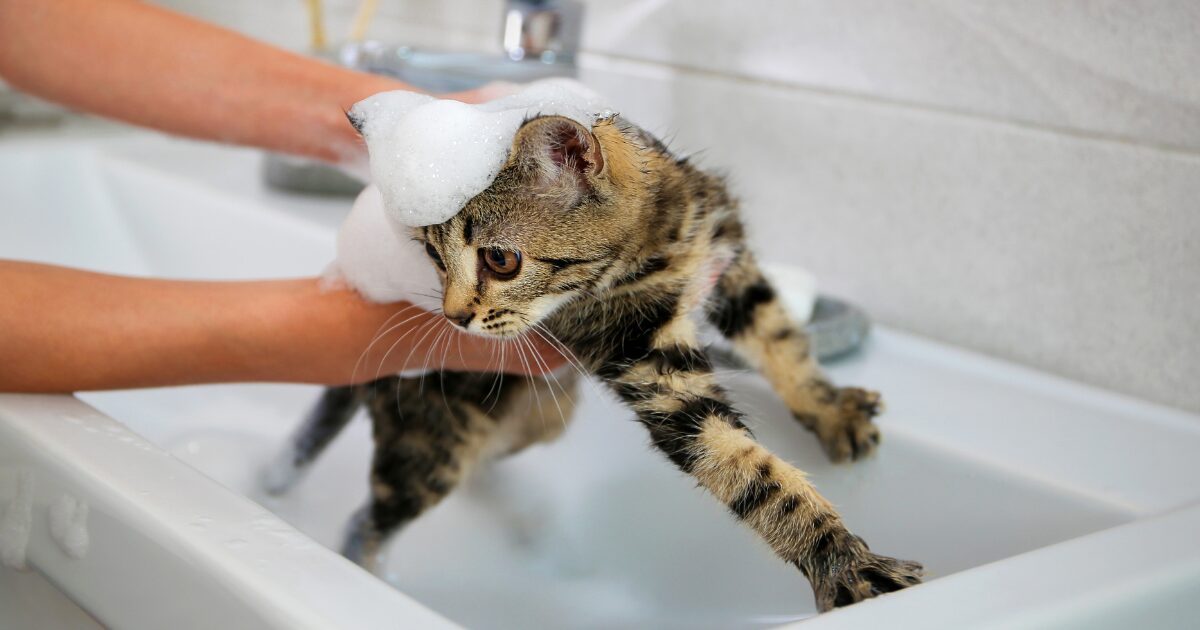
Cats with sensitive skin need extra care and attention during bath time. If your cat has skin conditions like dryness, flakiness, allergies, or irritation, it’s essential to use products and techniques that won’t aggravate their skin. Learning how to bathe a cat with sensitive skin can help soothe their discomfort and ensure that their bath time experience is both effective and gentle.
The first step is to choose the right shampoo. Always opt for a hypoallergenic, fragrance-free, and sulfate-free shampoo that’s designed for sensitive feline skin. Many pet shampoos contain chemicals or fragrances that can irritate your cat’s skin, so it’s important to select products that are gentle and formulated for cats with sensitivities. Look for shampoos containing soothing ingredients like oatmeal, aloe vera, or chamomile, which can help calm irritation.
Before you begin the bath, it’s a good idea to brush your cat’s fur to remove any tangles or mats, especially if they have long hair. Tangled fur can trap shampoo and water, making it harder to rinse and potentially causing discomfort. Be gentle with your cat during this process, and if your cat’s skin is particularly sensitive, consider using a softer brush to avoid causing irritation.
When you bathe your sensitive-skinned cat, make sure to use a gentle hand. Avoid scrubbing their skin too vigorously, as this can exacerbate irritation. Instead, gently massage the shampoo into their coat, taking care to avoid areas that are particularly sensitive. After applying the shampoo, thoroughly rinse your cat to remove all product residue. Leftover shampoo can cause dryness and irritation, so take extra time to ensure that your cat’s coat is fully rinsed.
After the bath, dry your cat gently with a soft towel. If your cat is comfortable with it, you can use a blow dryer on the lowest heat setting to speed up the drying process. However, make sure to keep the dryer a safe distance from their skin to avoid burns or discomfort. By following these gentle, specialized techniques, you’ll keep your sensitive-skinned cat happy and healthy.
How to Bathe a Cat with Long Fur: Expert Techniques for Keeping Their Coat Gorgeous
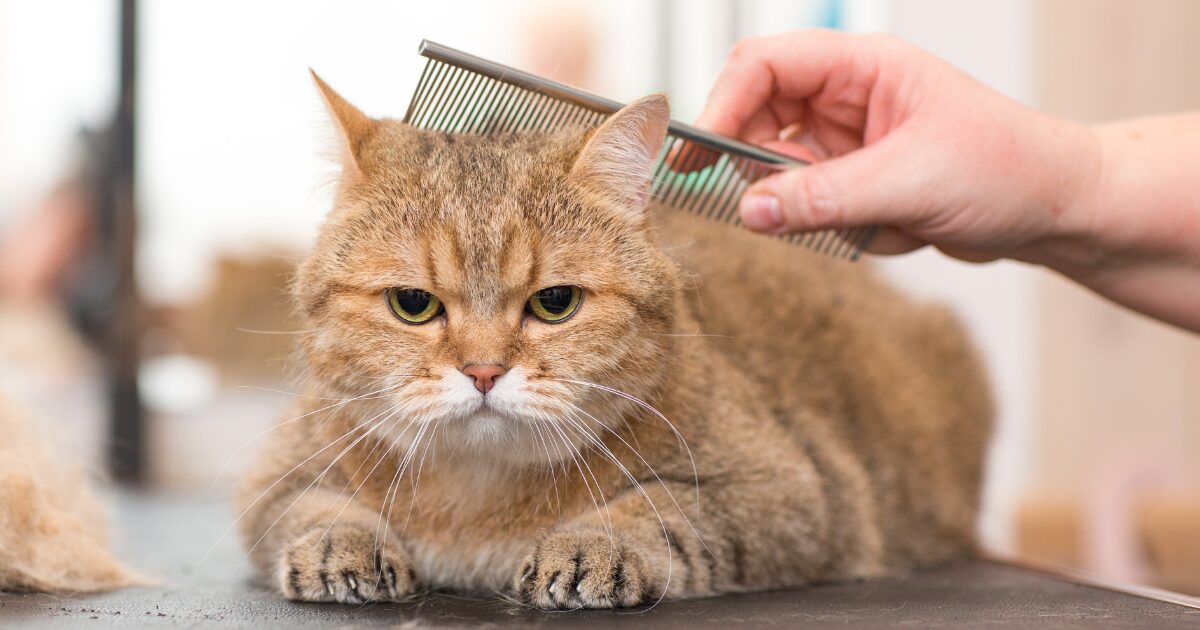
Long-haired cats have beautiful coats, but they also require extra attention during bath time. Their fur is more prone to tangling, matting, and shedding, so it’s essential to approach bath time with care to avoid damaging their coat or causing discomfort. If you’re trying to figure out how to bathe a cat with long fur, follow these expert tips for keeping their coat gorgeous.
Before you begin the bath, make sure to thoroughly brush your cat’s fur. Brushing helps remove tangles and mats that can become worse when wet. Pay special attention to areas prone to mats, such as the underarms, chest, and around the neck. If your cat has severe matting, you may need to carefully cut through the mats with scissors before bathing them. Use a wide-tooth comb or a slicker brush to work through tangles, starting from the tips and moving toward the roots.
When bathing your long-haired cat, use a cat-safe, moisturizing shampoo. Apply the shampoo gently to the fur, focusing on the areas that tend to get dirty first. Be careful not to over-scrub, as this could cause tangling and damage to their delicate fur. Rinse the shampoo thoroughly and repeat the process if necessary to ensure their fur is fully clean.
After the bath, dry your cat with a soft towel to remove excess water. Long-haired cats can take a while to dry, so be patient. If your cat tolerates it, use a blow dryer on the lowest heat setting to help dry their fur faster. Always keep the dryer at a safe distance to avoid overheating their sensitive skin. Once their coat is dry, brush through it again to prevent tangles and keep their fur silky and smooth.
How to Bathe a Cat and Avoid Scratches: Tricks Every Groomer Knows
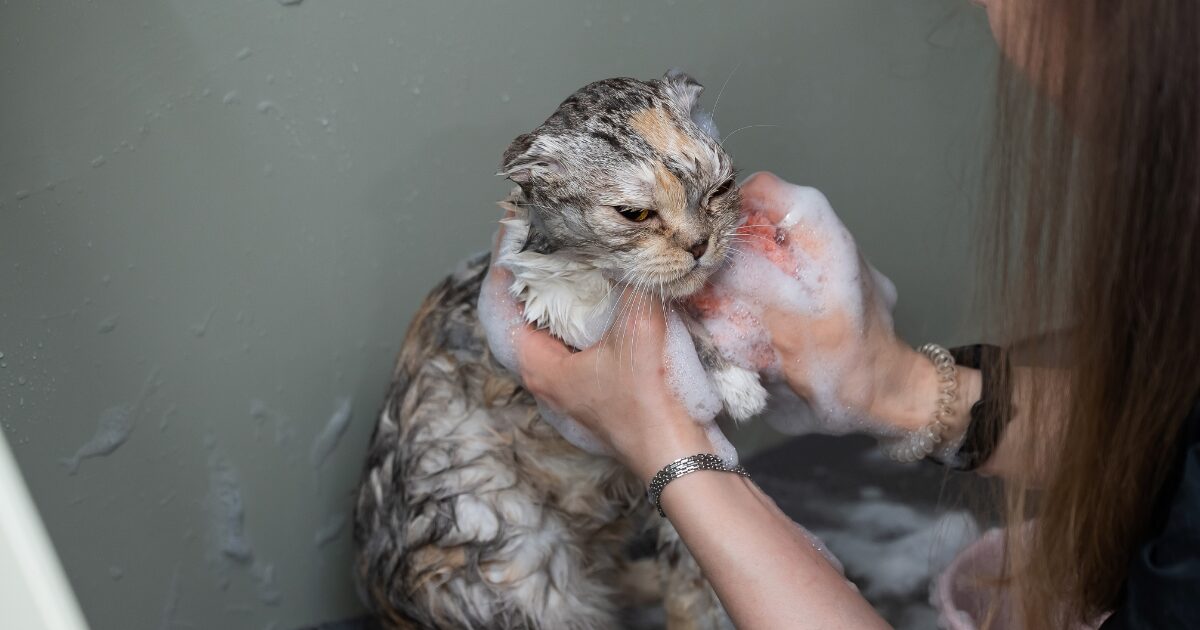
Bath time can be tricky when your cat is squirming and trying to escape. If you’re concerned about getting scratched, you’re not alone. Cats’ sharp claws can be a real challenge during bath time, but with the right techniques, you can avoid getting hurt while keeping your cat calm and comfortable.
One of the most important things to remember is to stay calm yourself. Cats can sense your anxiety, so remaining relaxed will help your cat feel more at ease. If your cat tends to get anxious or agitated during bath time, consider having a second person to help you. One person can gently hold the cat, while the other handles the bath. Alternatively, wrapping your cat in a towel, leaving only their head exposed, can help control their movements while still allowing you to bathe them.
Always trim your cat’s nails before the bath, if possible. Shorter nails reduce the chances of getting scratched. If your cat is especially squirmy, consider using a soft towel or grooming mitt to handle them instead of using your bare hands. This gives you more control and keeps your hands away from their claws.
Use gentle, calm motions while bathing your cat. Sudden movements or jerky motions may startle them, leading to scratches. Keep their face and head dry as much as possible unless necessary, as these areas tend to be more sensitive and harder to rinse. If you do get scratched, immediately clean the wound to avoid infection.
How to Bathe a Cat Safely and Quickly: Time-Saving Tips from the Pros

Bathing a cat doesn’t have to be a drawn-out process. With a few time-saving techniques, you can bathe your cat safely and efficiently, leaving both you and your pet with more time to enjoy other activities. Time is valuable,
especially when you’re handling a squirmy kitty, so learning how to bathe a cat quickly without compromising on quality is key.
First, preparation is everything. Before bringing your cat into the bathing area, gather all your supplies—shampoo, towels, a spray nozzle, and any grooming tools you’ll need. Having everything close by will save you time and keep your cat from getting agitated while you scramble to find things.
Next, use lukewarm water to rinse your cat quickly. If you’re using a shower or spray nozzle, make sure it’s a gentle stream that won’t startle your cat. Apply the shampoo in small amounts and lather gently to avoid wasting time with excess product. Rinse thoroughly to avoid leftover shampoo, which can irritate your cat’s skin.
If your cat tolerates it, use a blow dryer on the lowest, coolest setting to dry them quickly. Microfiber towels can be particularly effective at soaking up moisture, cutting down on drying time. Keeping the bath session short and sweet is the key to ensuring both you and your cat are relaxed and happy.
How to Bathe a Cat and Make It Fun: Turning Bath Time Into a Positive Experience
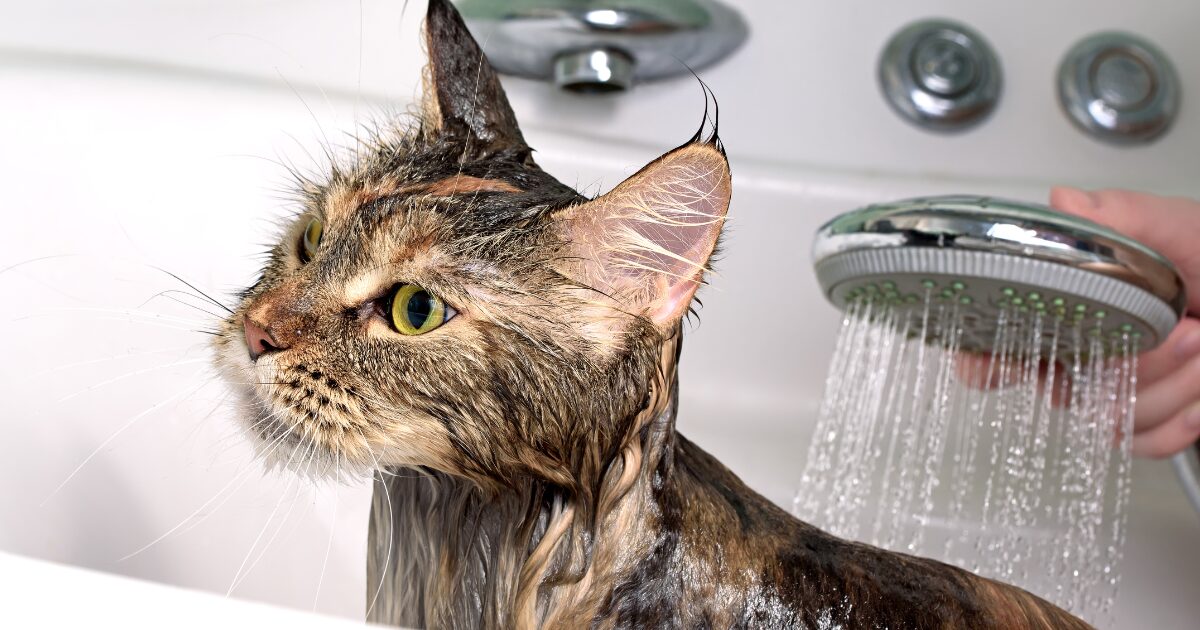
Bath time doesn’t have to be a dreaded chore—it can be fun! By turning bath time into a positive experience, you can help your cat associate water with something enjoyable rather than stressful. Whether you’re giving your cat a quick bath or a full spa treatment, making the process pleasant can improve your cat’s grooming routine and even strengthen your bond.
Start by introducing your cat to water in a low-pressure way, such as with a damp washcloth. Over time, slowly build up to full baths, rewarding your cat with treats or extra petting after each step. Give your cat plenty of praise, and keep the atmosphere relaxed. You can even play calming music or use calming scents to help your cat associate bath time with relaxation.
The more you make bath time fun and rewarding for your cat, the more they’ll look forward to it rather than dread it. Use positive reinforcement consistently to create a bath routine your cat will enjoy. And always follow up with a snuggle session or their favorite toy!
Conclusion
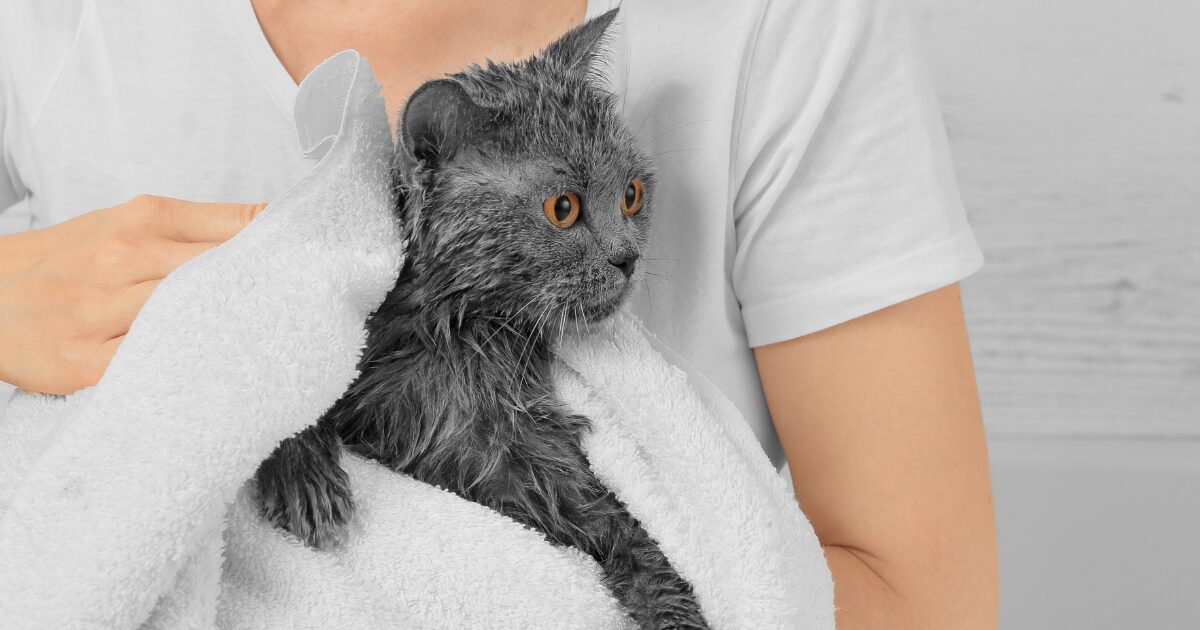
Bathing a cat might seem like a challenge, but with the right techniques and a little practice, you can make it an easy and enjoyable experience for both you and your feline friend. Whether your cat has sensitive skin, long fur, or just a dislike for water, following the expert tips in this article will help you master how to bathe a cat like a true professional. From creating a calm bathing environment to using the right grooming tools, every step you take will bring you closer to a stress-free, smooth bath time routine.
Remember, patience and preparation are key. When you take the time to set the right atmosphere, choose the right products, and approach the task with care, bath time becomes more than just a chore—it becomes an opportunity for bonding and self-care for your cat. So, whether you’re a new cat owner or an experienced cat care professional, these tips will help you transform bath time into a rewarding and pleasant ritual.
With these 7 expert techniques under your belt, you’ll feel confident every time it’s time to bathe your cat. Plus, your cat will love the results—shiny fur, healthy skin, and an overall sense of well-being. For more detailed tips, grooming advice, and professional cat care resources, don’t forget to check out The Paws Hub.
Happy grooming!